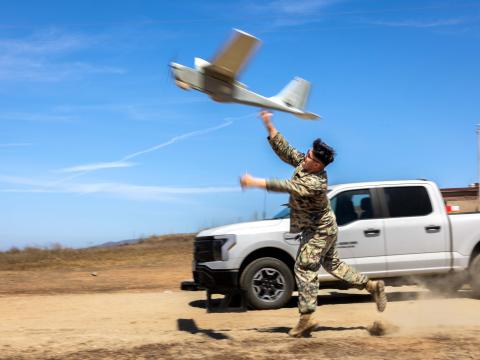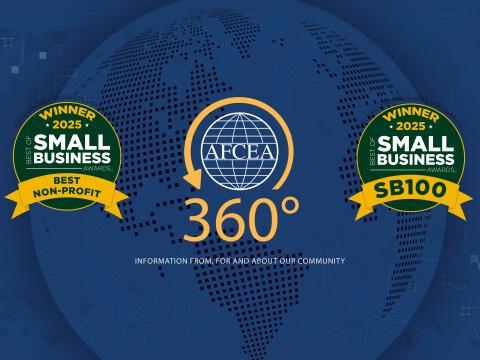Change Is Afoot in Europe
If you have not been to Europe lately, you need to reflect on how the continent has changed dramatically in recent years. Little has remained constant. The European Union has grown in scope and role and, with it, the euro has emerged as a major international currency. NATO has grown in size and mission, now embracing 26 nations.
If you have not been to Europe lately, you need to reflect on how the continent has changed dramatically in recent years. Little has remained constant. The European Union has grown in scope and role and, with it, the euro has emerged as a major international currency. NATO has grown in size and mission, now embracing 26 nations. The end of the Cold War has brought about reconciliation and integration of eastern and western Europe. Globalization has fostered greater interdependence and significantly altered relationships among Europe, North America, Asia, the Middle East and other parts of the world. And, the threat profile for Europe and the rest of the world has changed. The events of September 11, 2001, the March 11, 2004, Madrid train bombings, the July 7, 2005, bombings in the United Kingdom and other acts of terrorism have shifted focus in Europe and globally to the Global War on Terrorism and homeland security/internal security and resilience.
The European Union’s (EU’s) role in defense has grown tremendously in just this decade. This role begins with comprehensive EU procurement regulations that the member nations can supplement, but not change. A consistent procurement process is now in place that makes it easier for any company on the globe to navigate sourcing opportunities across the expanded EU. On the other hand, these regulations favor local presence, causing European companies to establish presence in more EU countries and non-European companies to site local concentrations of corporate resources in Europe, normally through acquisition.
This also has promoted more global teaming, allowing European and non-European companies to work through local firms. In addition, the EU has created the European Defense Agency (EDA) to facilitate a role for the union and its member nations in the defense planning and decision-making process.
With the EDA, there clearly is potential for overlap with the role and responsibilities of NATO. Defense budgets are tightening in Europe as elsewhere, so, with minor exceptions, there will not be new military force structures generated in the near term. There is work to be done to reconcile the respective roles of these two organizations.
NATO has grown through enlargement to the east to 26 member nations. It has focused in recent years on modernization and technology enhancement to promote interoperability. Most military budgets in NATO member countries have been or are being reduced, dictating the need for ways to create more efficient operations. This challenge is complicated by the arrival of new NATO members that must replace borderline-obsolete legacy equipment—in many cases left over from membership in the Soviet-dominated Warsaw Pact—with newer gear that not only interoperates with that of new Western allies but also provides needed capabilities inherent in network-centric operations. Many of these nations have pressing domestic budgetary concerns that compete with those of the defense community.
But the most significant change in NATO may be its assumption of command of the multinational force in Afghanistan. In that war-torn country, NATO now is controlling more than 30 participating nations’ armed forces—some of which are members of NATO, and some of which are not. Operating a multinational force outside Europe is a fundamentally new mission for NATO, and it creates new requirements for communications and command and control (C2). All of this is placing new demands on the C2 capabilities of NATO and the capabilities of the member nations to support the effort. But, at the same time, it is creating new opportunities for industry globally to support these new requirements.
Industry has responded to these new opportunities in two ways. An unprecedented level of cross-border consolidation has been achieved through acquisitions. In addition, global teaming is occurring to meet the capability needs of the new NATO. The requirements of NATO today are complex and sophisticated, requiring the expertise of integrated multinational teams. This trend will continue as industry seeks to bring to NATO the means to meet its expanded mission set.
The global reach of AFCEA parallels the movement in NATO and supporting industry. About 25 percent of AFCEA’s membership is positioned in Europe, with a global reach to support governments and industry. This puts AFCEA in a unique position to facilitate the dialogue necessary among governments, industry and academia to explore, evaluate and meet these needs derived from the expanding NATO mission set. I look to each of you to help lead this effort to promote a healthy dialogue between government and industry to tackle these challenges. Success in this endeavor would allow the EU, NATO and the member nations to work collaboratively to combat the growing international terrorist threat. It is only through such a collective effort that the global community will suppress radical terrorist elements and promote world peace through cooperation and education. My thanks for all that you do.
The European Union’s (EU’s) role in defense has grown tremendously in just this decade. This role begins with comprehensive EU procurement regulations that the member nations can supplement, but not change. A consistent procurement process is now in place that makes it easier for any company on the globe to navigate sourcing opportunities across the expanded EU. On the other hand, these regulations favor local presence, causing European companies to establish presence in more EU countries and non-European companies to site local concentrations of corporate resources in Europe, normally through acquisition.
This also has promoted more global teaming, allowing European and non-European companies to work through local firms. In addition, the EU has created the European Defense Agency (EDA) to facilitate a role for the union and its member nations in the defense planning and decision-making process.
With the EDA, there clearly is potential for overlap with the role and responsibilities of NATO. Defense budgets are tightening in Europe as elsewhere, so, with minor exceptions, there will not be new military force structures generated in the near term. There is work to be done to reconcile the respective roles of these two organizations.
NATO has grown through enlargement to the east to 26 member nations. It has focused in recent years on modernization and technology enhancement to promote interoperability. Most military budgets in NATO member countries have been or are being reduced, dictating the need for ways to create more efficient operations. This challenge is complicated by the arrival of new NATO members that must replace borderline-obsolete legacy equipment—in many cases left over from membership in the Soviet-dominated Warsaw Pact—with newer gear that not only interoperates with that of new Western allies but also provides needed capabilities inherent in network-centric operations. Many of these nations have pressing domestic budgetary concerns that compete with those of the defense community.
But the most significant change in NATO may be its assumption of command of the multinational force in Afghanistan. In that war-torn country, NATO now is controlling more than 30 participating nations’ armed forces—some of which are members of NATO, and some of which are not. Operating a multinational force outside Europe is a fundamentally new mission for NATO, and it creates new requirements for communications and command and control (C2). All of this is placing new demands on the C2 capabilities of NATO and the capabilities of the member nations to support the effort. But, at the same time, it is creating new opportunities for industry globally to support these new requirements.
Industry has responded to these new opportunities in two ways. An unprecedented level of cross-border consolidation has been achieved through acquisitions. In addition, global teaming is occurring to meet the capability needs of the new NATO. The requirements of NATO today are complex and sophisticated, requiring the expertise of integrated multinational teams. This trend will continue as industry seeks to bring to NATO the means to meet its expanded mission set.
The global reach of AFCEA parallels the movement in NATO and supporting industry. About 25 percent of AFCEA’s membership is positioned in Europe, with a global reach to support governments and industry. This puts AFCEA in a unique position to facilitate the dialogue necessary among governments, industry and academia to explore, evaluate and meet these needs derived from the expanding NATO mission set. I look to each of you to help lead this effort to promote a healthy dialogue between government and industry to tackle these challenges. Success in this endeavor would allow the EU, NATO and the member nations to work collaboratively to combat the growing international terrorist threat. It is only through such a collective effort that the global community will suppress radical terrorist elements and promote world peace through cooperation and education. My thanks for all that you do.




Comments